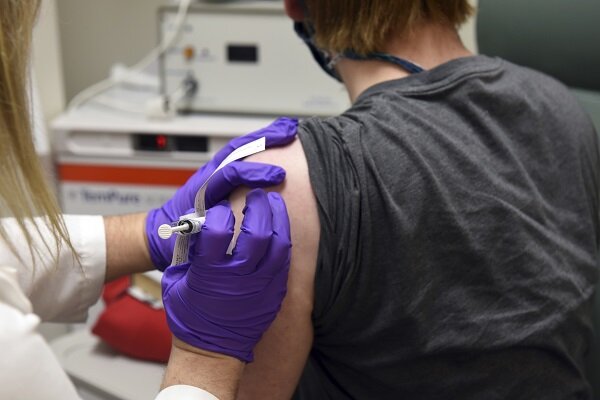The race to find a vaccine for the Coronavirus is in full swing. Experts believe mass testing may be underway as early as this year.
“We have come a long way in just a short time,“ said Paul Kristiansen, who is assistant head of research in the international vaccine alliance Cepi, to NTB.
The alliance supports nine Coronavirus vaccine projects. Six are being tested clinically, ie in humans, said Kristiansen.
The clinical tests usually take place in three phases, where phase three involves testing on a large group of people.
“Large-scale testing we believe will start during this year, probably for more candidates,” he added to NTB.
The Norwegian-supported alliance is focusing on several tests at the same time: Different projects based on different technology.
“We are looking for the candidates who have the greatest chance of reaching the finish line quickly,” said Kristiansen.
Book production capacity
Cepi “books” production capacity, which can be used as soon as one of the vaccine candidates is ready for large-scale production. In this way, the alliance takes some of the financial risk for the companies.
“We are planning for large-scale production even now, although we have not figured out how far the vaccine candidates will vet. One will have several million doses during this year, and then for use in clinical trials. Then you will continue the trials and get an approval to use the products. It will happen next year,” explained Kristiansen.
If the mass testing is successful, the next step is approvals from, among other things, a country’s relevant medical authorities. Cepi, and the collaborative project Covax, of which the alliance is also part, will ensure that the vaccines can be mass-produced and made available worldwide – quickly.
Billions from Norway
Norway has contributed 2 billion kroner in the form of a bond loan to Cepi, Dagens Næringsliv reported on Wednesday.
In total, Cepi has received promises of 1.4 billion dollars, over 13 billion kroner, for the work of developing a vaccine. The money comes from a number of states, private donations and the UN.
To receive support, companies and research communities must commit to “fair access” to vaccines. This will prevent the person who develops the first effective vaccines from selling them to the highest bidder.
When asked what “fair access” means, Kristiansen refers to the WHO. But the goal is to prevent the one who can put the most money on the table from receiving the first doses.
Many candidates
160 vaccine candidates were registered on 7 July to the World Health Organization (WHO) overview of the work of developing the vaccines.
21 of them are being tested on humans. WHO emphasizes that the overview is for information only, and that being on the list does not in itself mean that the organization supports or approves the projects.
Kristiansen said the researchers share information continuously and that the WHO coordinates much of the work. He believes the knowledge sharing is unique.
“In this race, everyone benefits from sharing research results. It is not the case that one vaccine manufacturer will ever be able to meet the need,” he said.
DNA technology
There are three main types of vaccine technology. One of these, DNA and RNA technology, has not yet been used in any vaccine approved by any country’s pharmaceuticals. The reason is that these vaccines often do not provide strong enough immune responses for the formation of protective immunity.
It is nevertheless this variant that immunologist Gunnveig Grødeland at the University of Oslo sees as most promising. He pointed out that the technology has become more promising in recent years.
“These vaccines contain DNA that encodes specific proteins. They contain the recipe for the vaccine protein you want the body to produce,“ said Grødeland.
The technology reduces the risk of side effects, and the vaccine is relatively easy to produce, she added.
Neither Grødeland nor Kristiansen believe we need to fear that the haste to find an effective vaccine will cause an unsafe variant to slip through the process. Ultimately, it is the pharmaceutical companies’ responsibility to ensure this.
“Side effects are something that is monitored throughout the clinical development,”
said Kristiansen, emphasizing that there are strict regulations that vaccine manufacturers must follow.
Safe vaccine
During the 2009 swine flu, the Pandemrix vaccine was given to millions of people. A few developed narcolepsy. Grødeland pointed out that some people developed narcolepsy from the swine flu virus itself. Research is still ongoing to understand exactly what caused narcolepsy.
But the likelihood of this type of side effect can be reduced with RNA and DNA vaccines since we can then control exactly what the immune system should form responses to, according to Grødeland.
She declared she has full confidence that the Norwegian Medicines Agency will make a good assessment when the first Coronavirus vaccines are sent for approval.
“If they say it is approved, I trust it,” she said.
© NTB Scanpix / #Norway Today






Be the first to comment on "Large-scale testing of the Coronavirus vaccine this year, experts believe"